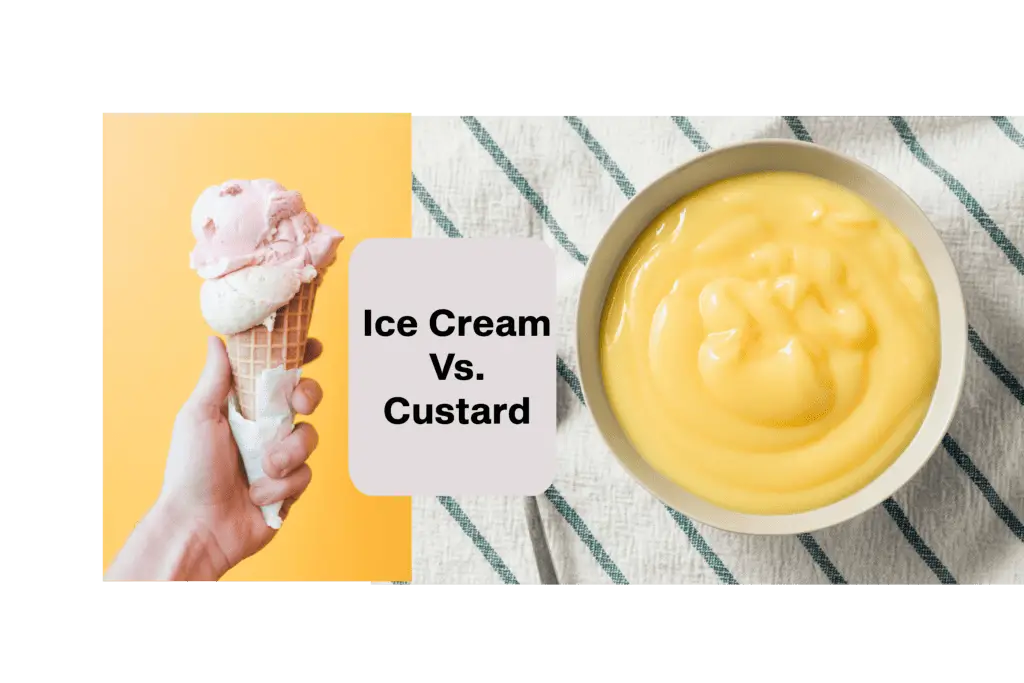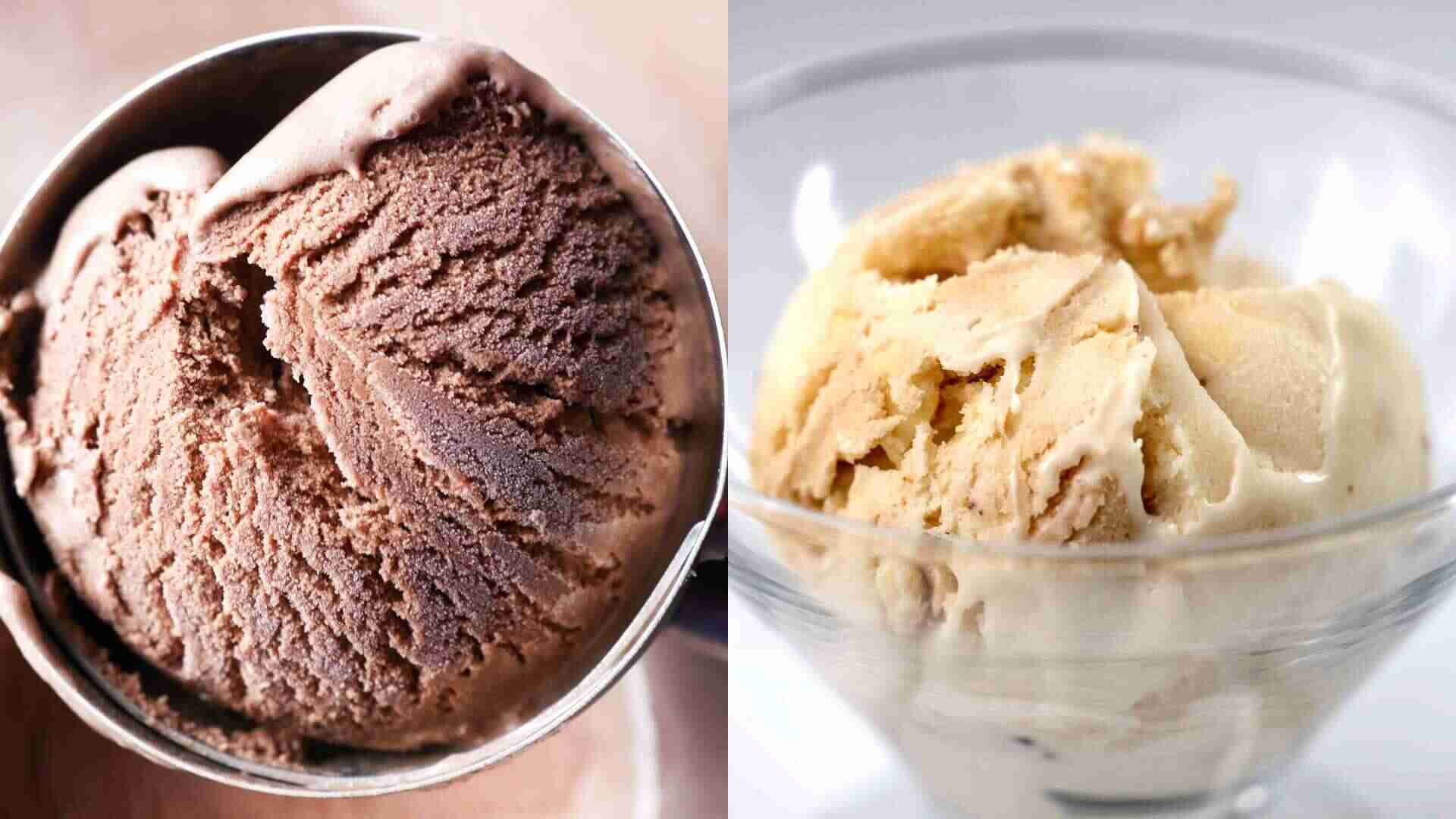| Posted on | food-cooking
What are the Differences Between Custard and Ice Cream?
| Posted on
Custard and ice cream are our favourite desserts, and they have usually had a particular vicinity in our hearts and kitchens. They are each creamy, tasty, and reviving, but they will not be the same. Knowing those differences will let you choose the proper dessert for each event and improve your appreciation of every dish.

Ingredients for Custard
Egg yolks are used to thicken a base together with milk, cream, and sugar to create the wealthy, creamy dish referred to as custard. Egg yolks are the number one aspect that distinguishes custard from ice cream. They offer custard its characteristic silky smoothness similar to including richness. Vanilla is a commonplace flavouring in conventional custard recipes, but chocolate, caramel, and fruit tastes are certainly one-of-a-kind properly-liked additions.
Ingredients for Ice Cream
Conversely, the number one additives of ice cream are milk, cream, sugar, and sometimes eggs. But no longer like custard, ice cream does not at the entire use eggs. A lot of ice cream recipes sincerely skip the eggs in select of churning and including air to supply a slight and airy texture.
Custard Taste
The rich and nuanced taste feature of custard is usually a result of the egg yolks. The rich, nearly buttery taste that the yolks carry to the custard balances its sweetness and other flavourings. Although vanilla is a traditional opportunity, custard's creamy basis lends itself to numerous flavours, making it a bendy dessert. The taste is in addition more suitable by way of cooking for the reason that additives integrate harmoniously under moderate warmth.
Flavour of Ice Cream
Compared to custard, ice cream has a simpler sweetness and regularly brings out the precept taste difficulty more. Ice cream's tastes might be greater colourful and sparkling thinking that it is frozen after being churned. They affect taste additionally can be precipitated via cold, every so often masking specific components. To counteract this, you can melt the ice cream a touch earlier than ingesting it, as a way to launch extra of its aromatic elements.

Dessert Comparison: Custard and Ice Cream
There are a few large differences between custard and ice cream that affect your selection based totally on the state of affairs and your taste buds.
Components and Method of Cooking:
- Custard: To save the egg yolks from curdling, it must be cooked with warning. Tempering the eggs and slowly heating the combination till it thickens are the stairs involved.
- Ice cream: Making it at domestic the use of an ice cream system is usually less tough. The combination is churned and refrigerated; if eggs are used, a custard basis may be applied, but this isn't always normally the case.
Mouthfeel and Texture:
- Creamy, smooth, and dense custard. It has a fantastic richness from the egg yolks that cover the mouth.
- Ice cream: airy, mild, and invigorating. The soft texture produced by using churning melts uniformly and hastily.
Taste Experience:
- Custard: Full-bodied, problematic, and infused with a wealthy, buttery taste from the egg yolks. As meals cook, flavours blend.
- Ice Cream: Flavors that are bold and direct. Many one-among-a-kind taste trends can also shine due to the frigid temperature and air inclusion.
Serving and Versatility:
- Custard: This dessert can be eaten warm or bloodless, and it's frequently used as a stand-on dish or as a filler for other recipes like pies or trifles.
- Ice cream: Usually served frozen, it can be eaten by itself or as a topping for cakes or pies.

Ultimately, the choice between custard and ice cream relies upon the person and the place in which the dessert is being given. Custard is the ideal indulgence that may match nicely with different chocolates or stand by myself due to the truth of its creamy, silky texture and sundry taste. Ice cream is pleasant for a refreshing, adaptable dessert that can be eaten in masses of strategies because of its mild, ethereal texture and extremely good taste.
Recognizing the main differences between ice cream and custard enables you to enjoy their precise skills. Sweet treats like bowls of silky custard and scoops of creamy ice cream are cute approaches to satisfy your sweet yearning. You'll comprehend exactly what to expect and a way to pick out the right pride in your flavour buds the following time you want to decide between custard and ice cream.
0
0 Comment
| Posted on
One is custard, the other is ice cream—two cold favorites loved by just about everyone around, but yet very dissimilar in many measures. Allowing one to understand their differences will open your eyes to why one will remain just that. The ensuing paper takes into consideration the comparison and contrast of custard and ice cream based on ingredients, method of preparation, texture, flavor, and nutritional content.
Within this spectrum of categories are the best ice creams, which distinctly part form custard through the belief that ice cream is a mixture of milk, cream, and sweeteners rather than with the addition of egg yolks as in custard. It is these yolks and their addition to the custard that lies at the very core reason that next to one another custard is richer, thicker, and denser while ice cream is light and airy. Although the presence of eggs in ice cream—in today's modernistic approach to catering—is just as likely as in custard, it is not a defining aspect of the creation.

Preparation Methods
The methods used in preparing custard and ice cream also vary. This is even while ice cream is churned and frozen together to trap air into the mix, thereby leaving it with that light fluffy feel. Churning helps ensure no large crystals of ice are left behind, hence smooth in texture.
Custard, on the other hand, goes through the cooking process and thickens before freezing. The mixture is gently heated as proteins in the egg coagulate, which helps the mixture thicken. This step needs a process of constant stirring to prevent curdling or burning the mixture. Once thick, the custard is cooled, churned, and frozen, which explains the result thick and creamy texture.
The difference in texture and consistency between custard and ice cream is quite pronounced. Ice cream is rather smooth, light, and aerated in texture—air is intentionally incorporated as the mix is churned. This is how it's wanted for the fact that ice cream is easily scooped and can hold many shapes, including cones and sundaes.
The presence of egg yolks and the pre-cooking process makes the texture of custard thicker, richer, and creamier than ice cream. It results in custard having a denser, more luxurious mouthfeel. This thickens the texture and causes custard to melt slower than ice cream.

Flavor Profiles
Custard and ice cream both provide amazing flexibility in the large number of flavors that can be included. Considering that ice cream is made out of so many components and flavorings, the flavors can range from vanilla and chocolate to lavender honey or bourbon pecan. Its light, airy texture permits broad flavor infusions.
- Custard as a base tends to be more decadent and creamy, hence most often it stays traditional with its flavors, including vanilla, chocolate, and caramel, though it might also contain extracts from fruits, spices, or even savory ingredients like herbs or cheese. Its denser texture provides more opportunity for playing off these flavors into depth and intensity.
On the other hand, custard and ice cream are very different in nutritional terms. In general, compared to custard, ice cream has fewer calories and less fat as it lacks the extra egg yolks. It puts ice cream in a ray of light in terms of categories of food.
Custard is, due to the egg yolk addition to the mixture, higher in protein and fat, providing a richer texture and flavor. Nutrition, of course, varies strongly from recipe to recipe and from brand to brand, so let's take a look at that label if you have some dietary concerns.

Variants and Specialties Around the Globe
There are different takes on custard and ice cream in different regions of the world. Frozen custard is particularly popular in the United States with Midwesterners. Milwaukee and St. Louis in particular have a Read more at: Wikipedia long history of this creamy frozen food. In France, there is crème anglaise, which is a traditional custard sauce that is sometimes used as a topping for desserts, poured around desserts or used to fill desserts. There is Italian gelato, a type of ice cream, very similar texturally, but denser and has more vibrant flavors, due to its lower temperature and the smaller quantity of air it is mixed with.
While somewhat similar to each other, custard and ice cream are also rather different when considering ingredient differences, preparation methods, textures, flavors, and nutritional value. Ice cream is light and fluffy, lending itself to a huge range of flavors, making it a versatile and very popular treat. Custard, on the other hand, is rich, dense, and positively packed with deep flavors, most likely leading to a more luxurious dessert course. Whether you prefer a classic scoop of ice cream or feel a bit more indulgent with the ultra-rich flavor of custard, it's all the world of cold, frozen delight.
0
0 Comment
| Posted on
Custard and ice cream differ primarily in their ingredients and texture:
-
Base Ingredients:
- Custard: Made with eggs, milk or cream, and sugar. The inclusion of egg yolks gives custard its rich texture and flavor.
- Ice Cream: Typically made with cream, milk, sugar, and sometimes eggs, but it doesn’t always require eggs. Ice cream often has a higher fat content.
- Custard: Made with eggs, milk or cream, and sugar. The inclusion of egg yolks gives custard its rich texture and flavor.
-
Texture:
- Custard: Creamy and thick, with a smooth consistency due to the emulsifying properties of the egg yolks.
- Ice Cream: Generally lighter and airier because of the churning process that incorporates air, making it fluffier.
- Custard: Creamy and thick, with a smooth consistency due to the emulsifying properties of the egg yolks.
-
Cooking Method:
- Custard: Usually cooked on the stove to create a custard base, which is then cooled before freezing.
- Ice Cream: This can be made without cooking (for egg-free versions) and is churned while freezing to achieve a soft texture.
- Custard: Usually cooked on the stove to create a custard base, which is then cooled before freezing.
-
Flavor:
- Custard: Richer and denser, often used in desserts or as a filling for pastries.
- Ice Cream: Available in a wide range of flavors and can be more refreshing, often enjoyed on its own or as a dessert topping.
- Custard: Richer and denser, often used in desserts or as a filling for pastries.
In summary, custard is egg-based and thick, while ice cream is cream-based and typically lighter and fluffier.
0
0 Comment
Custard and ice cream differ mainly in their ingredients and texture. Custard contains egg yolks, which give it a rich, creamy texture, while ice cream is made with cream, milk, and sugar, typically without eggs. This results in custard being denser and creamier, whereas ice cream is often lighter and airier due to the churning process that incorporates air. Flavor-wise, custard has a more pronounced richness and can be served warm, while ice cream, usually served cold, comes in a wider variety of flavors. Both are delicious, but they offer different experiences!
0
0 Comment
